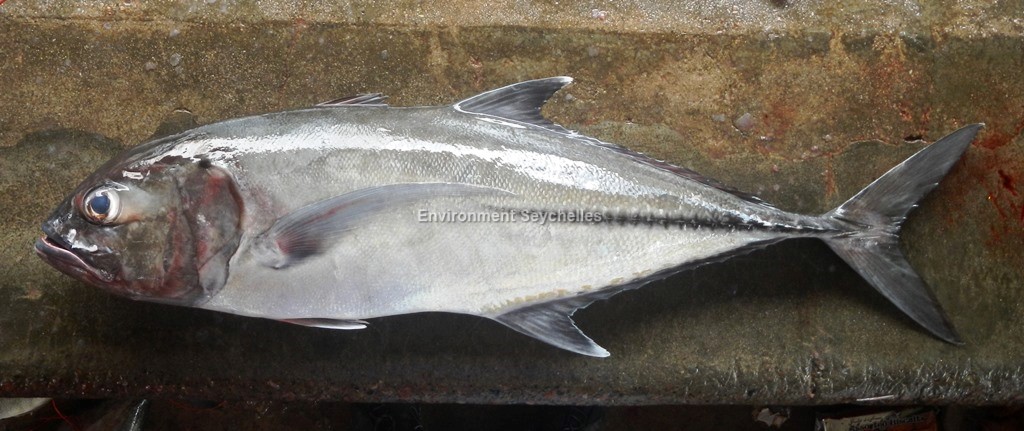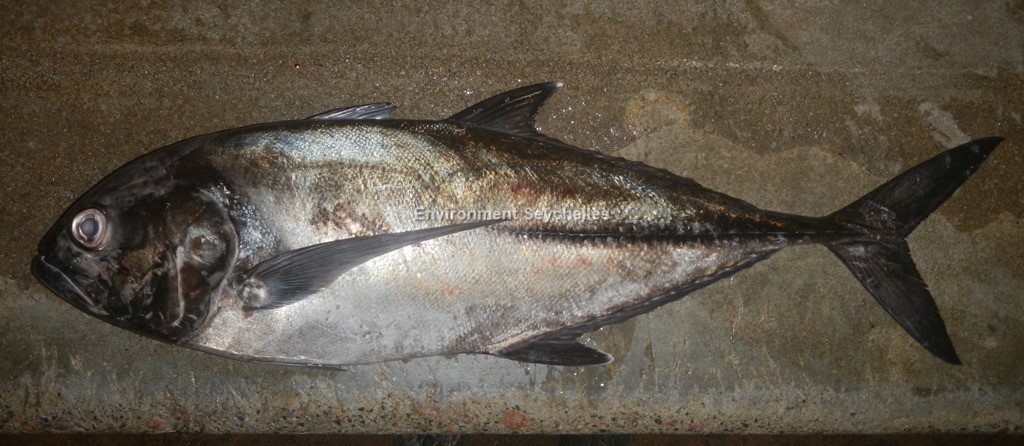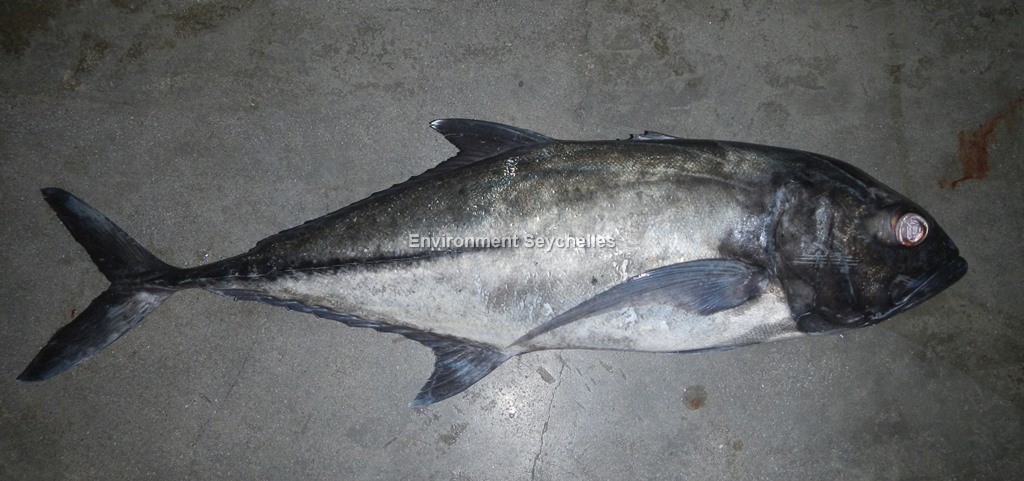Description:
Dorsal spines: 9; Dorsal rays: 19-22; Anal spines: 3; Anal rays: 14-17.
Body oblong and moderately compressed. Dorsal profile moderately convex anteriorly, ventral profile only slightly convex. The large eyes have a well-developed adipose eyelid,
moderate anteriorly, posterior eyelid extends onto eye to rear border of pupil. Chest completely scaly. A single row of conical teeth occurs in the lower jaw, while the
upper jaw has a single, outer row, conical teeth and an inner band of villiform teeth.
Colour: adults with head and body silvery olive to blue-green above, silvery olive to whitish below. Males in courtship are black. Small blackish spot at upper angle of
opercle. Tip of dorsal and anal fin lobe is white becoming more so with increasing size. Anal and caudal fins yellowish to black. Lateral-line scutes dark to black.
In juveniles and young adults, head, body, and scutes more silvery and fins paler (grey to yellow) except upper half of dorsal-fin lobe and upper lobe of caudal fin
usually dark. The caudal fin is deeply forked and the pectorals are long and sickle shaped. Juveniles have six dusky crossbars but these become less distinct with age.
Size:
Maturity: Lm 42cm SL. Range unknown. Max Length: 120cm. Commonly 60cm FL.
Habitat and Ecology:
Inhabit coastal and oceanic waters associated with reefs (depth 0-146m. pelagic at 1-96m). Juveniles may occur in estuaries. Adults lethargic, shoaling fish by day but at
dusk these predators disperse and actively hunt their prey primarily reef fish and crustaceans.
Fishery Status:
This species is not protected or subject to fishery regulations. It is caught in the handline fishery and is a regular though not particularly abundant component of the catch.
Notes:
References:
Dominici-Arosemena, A. et al. (2010). Caranx sexfasciatus. The IUCN Red List 2010: http://dx.doi.org/10.2305/IUCN.UK.2010-4.RLTS.T155130A4722924.en. (20/05/19).
Fischer, W. & G. Bianchi (eds), (1984). FAO species identification sheets for fishery purposes. Western Indian Ocean; (Fishing Area 51). Prepared and printed with the
support of the Danish International Development Agency (DANIDA). Rome, Food nd Agricultural Organization of the United Nations, vols 1-6: pag. var
Froese, R. & D. Pauly. Eds. (2019). FishBase. https://www.fishbase.se/summary/Caranx-sexfasciatus (20/05/19).
Heemstra P & Heemstra, E. (2004). Coastal Fishes of Southern Africa. NISC SAIAB. ISBN: 1-920033-01-7.
Van Der Elst, R. (2012). A Guide to the Common Sea Fishes of Southern Africa. Struik Nature, Cape Town, South Africa. ISBN: 978 1 86825 394 4
Citation:
Nevill, J.E.G. (2019). Caranx sexfasciatus, Bigeye trevally. Seychelles Seatizens. www.seatizens.sc. https://seatizens.sc/species/caranx-sexfasciatus-quoy-gaimard-1825/ (revised 24/06/22).




Excellent insights! Your breakdown of the topic is clear and concise. For further reading, check out this link: READ MORE. Let’s discuss!
Very interesting details you have observed, thank you for posting.Blog range